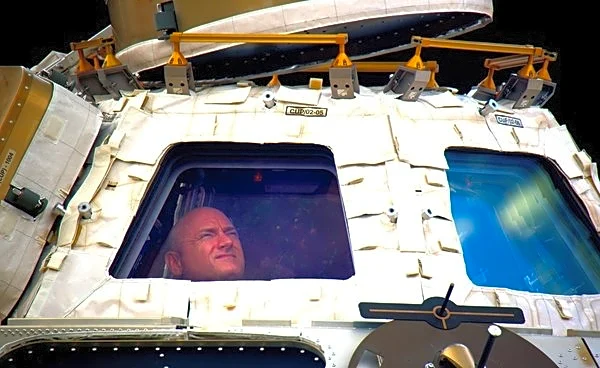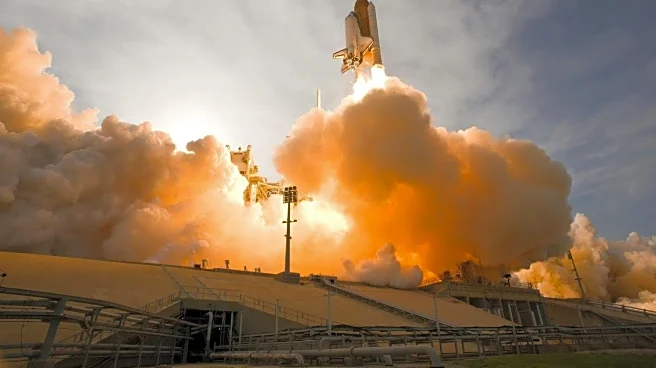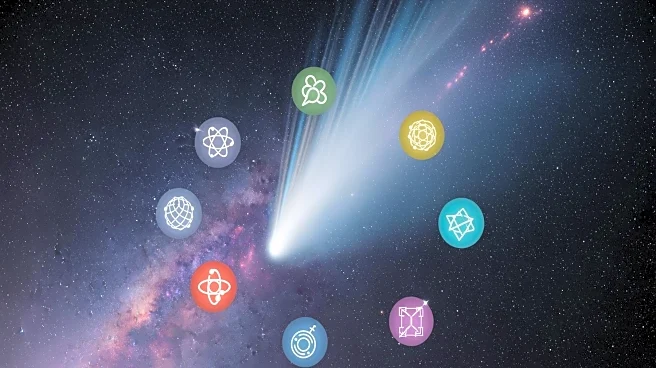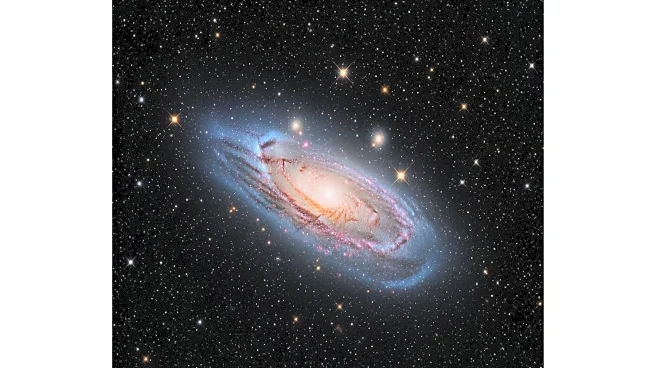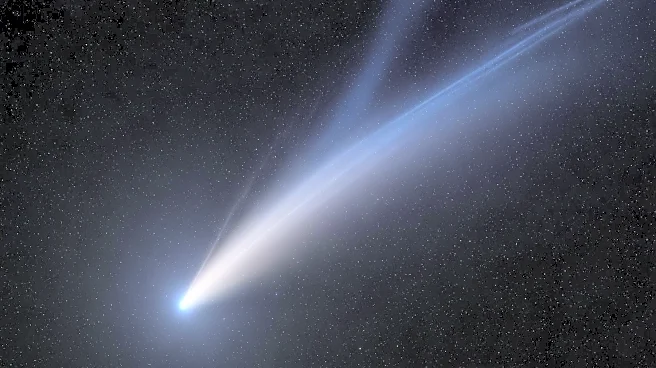What's Happening?
The VASCO project, led by astronomers including Beatriz Villarroel from Nordita, Stockholm University, is examining mysterious flashes of light captured in the 1950s on photographic plates at the Palomar
Observatory in California. These flashes, known as transients, are being studied for their potential connection to unidentified anomalous phenomena (UAP), a term encompassing UFOs. The project aims to identify astrophysical transients using archival data, now digitized, to explore objects that appear and disappear in the sky. Researchers have found a statistical correlation between these transients and reported sightings of unidentified objects, suggesting that some may be UAPs in Earth orbit. The study also notes a significant increase in transients following nuclear weapons tests, raising questions about their origins.
Why It's Important?
The investigation into these transients is significant as it could provide insights into the nature of UAPs and their potential connection to historical events like nuclear tests. Understanding these phenomena could impact how scientists approach the study of unidentified objects and their implications for national security and scientific research. The correlation between transients and nuclear tests suggests a possible link between human activities and unexplained atmospheric phenomena, which could influence future policies on nuclear testing and space exploration. Additionally, the study challenges conventional assumptions about UFO sightings, potentially reshaping public perception and scientific inquiry into extraterrestrial life.
What's Next?
Future steps may involve repeating observations with modern technology to verify the hypothesis that these transients are metallic objects reflecting sunlight in high orbit. Researchers might also explore alternative explanations for the phenomena, considering natural causes before attributing them to extraterrestrial sources. The study's findings could prompt further investigation into the relationship between nuclear tests and atmospheric phenomena, potentially leading to new scientific discoveries. As the debate continues, stakeholders in the scientific community and government may need to address the implications of these findings for national security and space policy.
Beyond the Headlines
The study raises ethical and scientific questions about the interpretation of historical data and the credibility of UFO sightings. It challenges researchers to consider the impact of human activities on unexplained phenomena and the importance of maintaining scientific rigor in the face of intriguing but unverified claims. The potential link between nuclear tests and transients could lead to discussions on the environmental and atmospheric consequences of such tests, influencing future international treaties and scientific research agendas.




